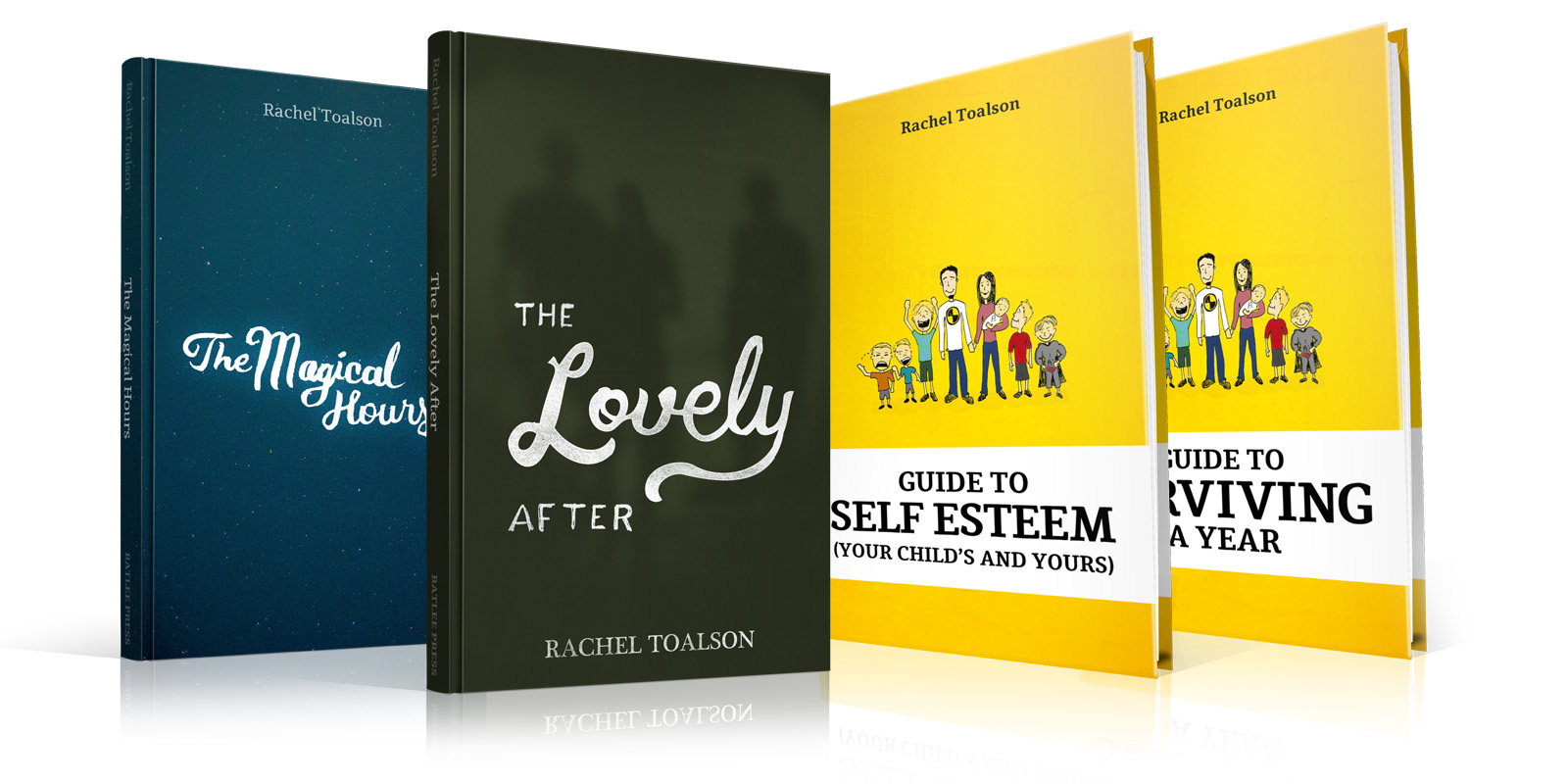Alright. So we’ve gotten through the resistance of selling ourselves, I’ve taught you what I learned about product launches from doing my own launch, and last week I shared how to get better at each progressive book launch. Today I’m going to give you a handy list of everything we need for an effective book launch. You’ll just have to fill in the pieces.
But a quick word first: Some of us think, when we have that “one, big book idea” that that’s it. We’re done. We launched out book and that’s all we’ll ever need to do.
False. If we’re interested in making writing a business, we will have to immediately pick up a pen and go at it again. And again. And again.
You know the best way to make it as a parent writer? Keep writing. Book after book after book. Because one will probably never be enough. I’m just telling the truth.
But this is good news, too. Because chances are, not only do we have more book ideas, but with each book we put together we’ll also be able to experiment with our launches until we get it exactly right for us and our audience.
Now that I got that out of the way, I wanted to share with you a nifty list for what I’ve included with my second launch, using what I learned from the first launch. This list will continue to evolve and change, but, for now, here’s what I believe is needed for an effective launch.
There are many different aspects of launching a product. There’s the initial getting-information-out, which is essentially creating a buzz about the product. The prelaunch time. The earlier this can start, the better. Months in advance would be great. I usually don’t plan well enough for that. This second launch had a landing page about six weeks before the project was scheduled to release.
Even if our projects won’t be done for a couple of months or a year, the sooner we can get a landing page up and start generating interest in it, the better our launch will end up going. What I’ve learned most from my process is that even when I’m in the rough draft writing stage, I need to be thinking about how I’ll be marketing my book. With so much out on the market, it’s harder and harder to stand apart, so it’s important to have that plan already in place.
So, in case you missed it, the first step to an effective book launch is a landing page.
Elements of a good landing page:
- A section with the book cover on display, along with a great product description. I hate writing product descriptions, mostly because it’s like “selling” the book that I wrote, but this is hugely important for drawing people in. Product descriptions are some of the most important tools for selling a book.
- A video that details, in a general way, what the project is and why you decided to write it. For my particular project, I decided to include little snippets of my family, because the project was one about living from family values. For fiction projects, you can document the writing process (or if it’s too late and you already have it written, you can stage it).
- Good copy that tells a story about the project. My landing page included some of the story behind what drove me to write the project (which was a nonfiction book—but I’ll be trying this out with a fiction project in December), what’s included it in and, the most important part, when it will release.
- A section where those interested can sign up for an email notification for when the project releases. This is important. These are the people who will be your primary customers. They’re already interested in the project—enough to sign up for a list where they’ll be emailed once the project is on the market. I chose to incentivize my email notification list with a companion guide about the project. People love having an inside look (for fiction) or some kind of practical application (for nonfiction). My fiction project, which will have a landing page sometime in December, will include a short story “prequel” that will introduce people to some of the characters.
It doesn’t end at the landing pages. Husband, who is a content marketing consultant, detailed out a three-week social media marketing campaign, where I would:
Share a book excerpt on my blog once a week
Post on Facebook and Twitter about the project three times every week.
Week one: The process and behind-the-scenes
Day one: Text
Day two: Picture
Day three: Video
Week Two: Origin story/inspiration behind the project
Day one: Text
Day two: Picture
Day three: Video
Week Three: Who the book is for and how the world will be different because of it.
Day one: Text
Day two: Text
Day three: Video or picture (in our case it was an infographic)
Three days before the book launched, we released three pre-launch videos with the following content (we will probably change this order next time):
Video 1: The story behind why I wrote the series
Video 2: What I hope people will get out of the series
Video 3: A real look inside (in the case of this particular book launch, it was how hard it was to live from our values every single day)
This might look like a lot of work. But here’s the thing: I did all this work once, for a series that will be spanning an entire year. When I do it again in December for my fiction series releasing in March, I will only have to do it once for a project that will span about five years. When we’re writing series, we can get the most out of a thing like a landing page, and when subsequent books release, we can still just point people to the landing page. It might be a lot of work for single books, but the truth is, single books probably need it even more (and also a greater lead time).
If you want to know more about the details of how to do this, visit my latest project landing page or connect with me on Facebook or Twitter. I don’t claim to have it all figured out, but I am actively learning and tweaking my process so that I can launch my books into the marketplace with the greatest momentum possible.


